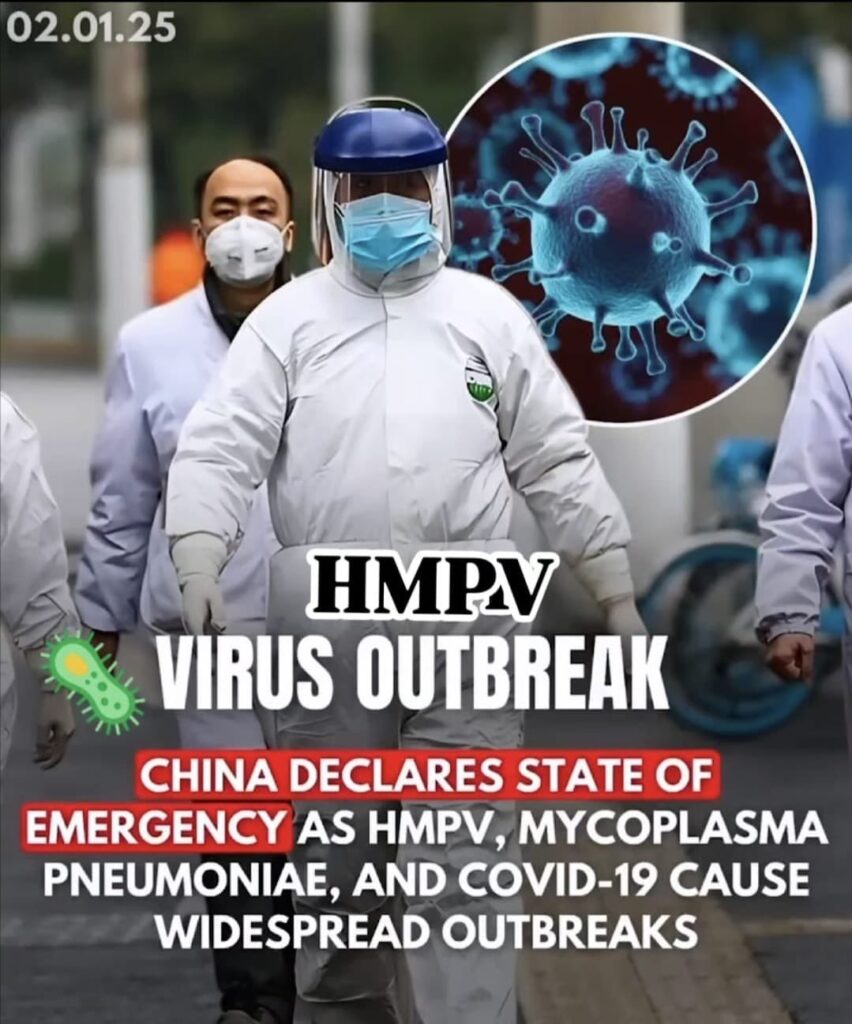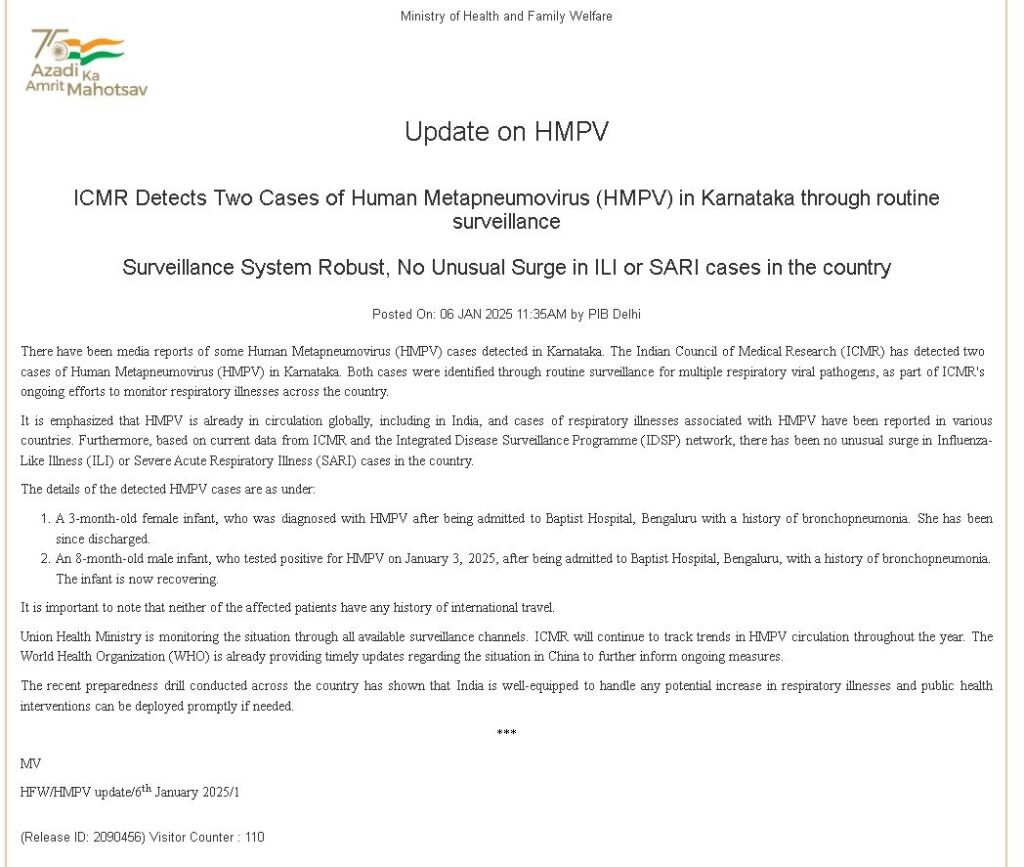HMPV Virus Symptoms: A Comprehensive Guide to Recognizing Human Metapneumovirus

HMPV Virus Symptoms:

Human Metapneumovirus (HMPV) is an Emerging Respiratory pathogen causing significant concern globally. This virus can infect individuals of all age groups, though young children, older adults, and immunocompromised individuals are particularly vulnerable. Understanding the symptoms of HMPV is crucial for early detection and effective management. Below, we provide a detailed guide to help you recognize and respond to the signs of HMPV infection.
What is Human Metapneumovirus (HMPV)?
Human Metapneumovirus is part of the Paramyxoviridae family and is closely related to the Respiratory syncytial virus (RSV). First identified in 2001, HMPV is now recognized as a leading cause of respiratory infections worldwide. It spreads primarily through respiratory droplets, direct contact with infected individuals, and contaminated surfaces.
Key Symptoms of HMPV Infection
The symptoms of HMPV can range from mild cold-like effects to severe respiratory distress. Below are the most common manifestations:
1. Mild Symptoms
- Runny Nose: One of the earliest and most Common Symptoms Of HMPV is nasal congestion or a runny nose, often mistaken for a common cold.
- Coughing: A persistent dry or productive cough is a hallmark symptom of respiratory infections caused by HMPV.
- Fever: Low-grade fever often accompanies the early stages of the infection.
-
2. Moderate Symptoms
- Sore Throat: Inflammation of the throat, leading to discomfort while swallowing, is frequently reported.
- Fatigue: Patients often experience significant fatigue due to the body fighting off the virus.
- Shortness of Breath: Difficulty in breathing may develop as the virus progresses, especially in individuals with pre-existing respiratory conditions.
3. Severe Symptoms
- Wheezing: A high-pitched sound during exhalation, often associated with airway obstruction or inflammation.
- Chest Pain: Tightness or discomfort in the chest may occur in more severe cases.
- Cyanosis: A bluish tint to the skin, particularly around the lips and nails, indicates a critical lack of oxygen and requires immediate medical attention.
Risk Groups: Who is Most Affected?

1. Young Children
HMPV is a leading cause of bronchiolitis and pneumonia in children under five years of age. Symptoms like irritability, poor feeding, and rapid breathing may indicate severe infection.
2. Older Adults
Adults over 65 years of age often experience complications, including exacerbation of chronic conditions like asthma or COPD.
3. Immunocompromised Individuals
People with weakened immune systems, such as those undergoing chemotherapy or living with HIV/AIDS, are at higher risk of severe outcomes.
How to Differentiate HMPV from Other Respiratory Infections
HMPV symptoms can mimic other illnesses like influenza, RSV, or COVID-19. However, specific diagnostic tests, such as PCR testing, can confirm the presence of HMPV.
Key differences:
- COVID-19: Often accompanied by loss of taste or smell, which is uncommon in HMPV.
- RSV: Primarily affects children and shows more severe wheezing.
- Influenza: Typically includes abrupt onset of high fever and muscle aches, unlike HMPV.

When to Seek Medical Attention
While most HMPV cases resolve within a week or two, severe symptoms necessitate medical intervention. Consult a healthcare professional if you or a loved one experience:
- Persistent high fever
- Difficulty breathing
- Signs of dehydration, such as dry mouth or reduced urine output
- Lethargy or unresponsiveness in children
Preventing the Spread of HMPV
1. Personal Hygiene Practices
- Wash hands frequently with soap and water for at least 20 seconds.
- Use alcohol-based hand sanitizers when soap is unavailable.
2. Respiratory Etiquette
- Cover your mouth and nose with a tissue or elbow when coughing or sneezing.
- Dispose of tissues immediately after use.
3. Avoid Close Contact
- Keep a safe distance from individuals exhibiting respiratory symptoms.
- Refrain from sharing personal items like utensils, cups, or towels.
4. Disinfection
Regularly clean high-touch surfaces such as doorknobs, light switches, and mobile devices.
Treatment Options for HMPV
There is currently no specific antiviral therapy for HMPV. Treatment focuses on relieving symptoms and supporting the immune system:
- Hydration: Drink plenty of fluids to stay hydrated.
- Medications: Over-the-counter pain relievers and fever reducers, such as acetaminophen or ibuprofen, can provide relief.
- Humidifiers: Using a cool-mist humidifier can ease breathing and alleviate congestion.
In severe cases, hospitalization may be required to administer oxygen therapy or mechanical ventilation.
The Long-Term Outlook for HMPV Patients
Most individuals recover fully from HMPV infections with proper care. However, those in high-risk groups should remain vigilant and seek timely medical advice to prevent complications.
By understanding the symptoms and preventive measures of HMPV, we can contribute to reducing its spread and ensuring better health outcomes. Stay informed and proactive to safeguard yourself and your loved ones from this emerging health concern.







One thought on “HMPV Virus Symptoms: A Comprehensive Guide to Recognizing Human Metapneumovirus”